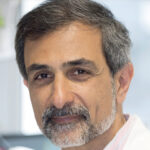Link to Pubmed [PMID] – 15376315
Dev. Dyn. 2004 Nov;231(3):582-91
The Pax3 and c-met genes are necessary for the development of tongue, diaphragm, and limb muscles. These hypaxial muscles derive from precursors that migrate out of the ventrolateral lip of the somites at occipital, cervical, and limb levels. In this work, we re-examined primary myogenesis in c-met signaling mutants using a skeletal muscle-specific lacZ transgene (Mlc3f-nlacZ-2E). This strategy allowed us to identify precisely the shoulder, limb, tongue, and dermal muscles that need Met for development and to confirm that the morphological structure of epaxial and body wall muscles was normal, even in the most severe c-met mutant. Surprisingly, however, X-gal staining showed that, in this mutant, hyoid arch-derived facial muscles were either reduced or absent, thus revealing that Met also contributes to the development of muscles in the head.

